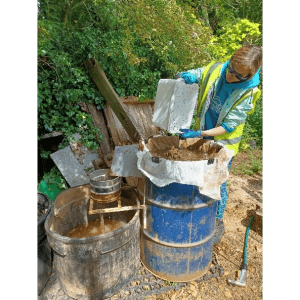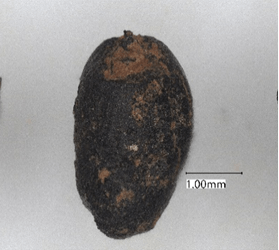What is autism? Is it a pervasive disease, or a vital aspect of the self? Elizabeth Fein utilises her experience as a trained clinical psychologist and anthropologist to explore the brain and identity within autistic youth through social and medical models. Fein employs a clinical ethnographic approach, which acknowledges the influences of her training, and looks critically towards ideas of cognition and culture. This is based on 2 years of participant observation on the East Coast, U.S.A, at a series of environments relating to or encompassing autistic youth.
A key conceptualisation within the book is the notion of divided medicalisation. This is traced throughout as we encounter various perspectives from autistic youth, educators and clinicians. Through this process, autism is conceptualised through a medical model as a complex condition and is then “reduced to… [a] disease-oriented… paradigm” (pg 5). Fein provides insights into the clinical interventions used in America to develop skills for autistic people and contrasts this with more ‘socialised’ interventions such as summer camps and specialised schools. Through this divide, Fein encapsulates ongoing debates in disability studies surrounding models of disability.
The first chapter of Living on the Spectrum consists of Fein’s observations from the ‘Journeyfolk Camp’ and the programme ‘ASPIRE’. Fein employs cognitive theories and participant observation to underscore how an inclusive social environment can be beneficial. This is followed by possible explanations of autistic behaviour; she explores culture as external mechanisms that humans rely on to govern their behaviour – autistic people can therefore be described as more dependent on culture than a neurotypical person, and roleplaying games at the Journeyfolk camp provided structured social interactions and shared behavioural norms to fit those needs.
This is contrasted by chapter six, wherein Fein discusses the programme ‘Asperger Centre’ in a medical school. She observes demands for medical practices to evolve and include the social world. Fein uncovered tensions between those running the ‘Asperger Centre’ and the clinicians as the former began to blur boundaries between medical and social practices. The programme’s closure shows how these interventions can be impactful for autistic individuals, but they are shut down and underfunded, leaving the clinical interventions that perceive autism as a disease. This, Fein comments, is the end point of divided medicalisation – where a condition’s critical aspects are excluded. Her more complex scientific theories are complemented by relatable anecdotes from interviews, showing the reader how autistic youth struggle to find a sense of belonging in environments that employ interventions to help them operate within a predominantly neurotypical world.
Despite Fein’s support of these environments, her use of language is problematic. As identified by Woods, “The language used to describe a topic affects how people treat the topic” (pg 1091). Fein’s recurrent use of person-first language (‘people with autism’) instead of identity-first is emblematic of the medical views of autism, which perpetuates this perception of autism by the public. Similarly, Fein refers to ‘Asperger’s Syndrome’ throughout, an outdated term with very little difference to the diagnostic criteria of ‘Autism Spectrum Disorder’. It is largely used to help individuals come to terms with their diagnosis, as autism has a deeply embedded stigma. However, viewing it as “autism in a milder form” serves to further ostracise autism.
An inevitable result of the medicalised lens is discussions around prevention and cure. Fein spends chapter seven and eight exploring this with participants, their parents, and through medical organisations. Commonly, Fein found that autistic people view autism as part of their identity, whilst their parents view it as a separate entity. Most parents she interviewed were in support of a cure. One example is the mother of a participant, whose support was largely informed by her experiences with an underfunded school district that refused to provide educational support. In a wider sense, she and many others will fight the medical system and a capitalist job market that will be reluctant to provide any support. Fein is justifiably critical of organisations like ‘Autism Speaks’ that refuse to provide funding for the improvement of autistic people’s lives and instead solely fund research towards cures. However, she appears hesitant to dive deeper into the structural causes of these issues. Would participants’ parents be so passionate towards wanting a cure if these social structural issues did not drive them to?
This could potentially be improved by exploring intersectionality within her participants’ lives. Fein acknowledges that most of her participants are male, which echoes the tendency to model autism on white, middle-class men. It would have been more impactful for Fein to forefront the experiences of other genders. For example, understanding how sexism can inform autistic women’s lives may provide fuller insights into their self-perception. By focusing purely on one subcategory of autistic people, arguably, Fein contributes to identity spread, wherein one’s disability label becomes dominant over other aspects of identity, such as class and ethnicity. Furthermore, Fein argues that the neurodiversity movement tends to emphasise valuable qualities of autism whilst ignoring the challenges that it creates. Whilst I agree that it is important to foreground both within the lived experience of autistic people, this emphasis on positive values of autism is in response to the social construction of autistic people’s identities as ‘others’.
To conclude, Fein’s Living on the Spectrum is an insightful contribution to the experiences and perceptions of autistic people. Her perspective as a clinical psychologist allows her to eloquently employ medical theories of the brain and the self alongside stories of her participants. Her writing style is compelling, but her outdated use of language and lack of intersectionality leaves something to be desired. I would recommend Living on the Spectrum as a book to provoke further discussion around how we can improve interventions for autistic people to ameliorate their quality of life. Due to its accessibility, its audience does not have to be limited to disability scholars, allowing the public to contribute to these discussions.
Developed as part of coursework for the MA unit Disibility and Difference
Author
Charlotte Goodwin is an MA Anthropology student with an interest in studying disability, particularly autism and disability expertise, which is the focus of her dissertation





